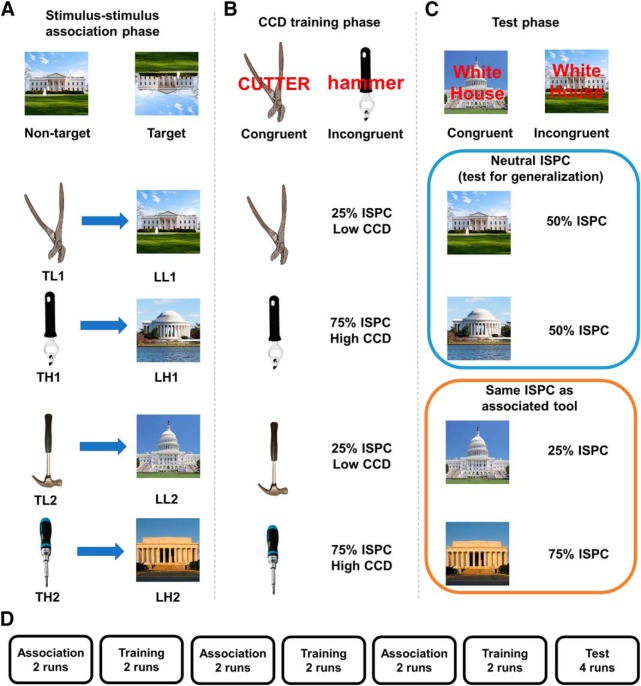Figure 1.
Experimental design of the three phases in the task. A, In the association phase, participants incidentally formed tool–landmark associations by viewing successively presented tools followed by their respective associative landmarks. Participants responded to rare inverted images. B, In the training phase, participants performed a variant of the Stroop task, wherein they identified the tool and tried to ignore the superimposed word. This phase induced associations between tools and CCDs by manipulating how frequently each tool was used in incongruent trials. Each stimulus is coded by its category (T, Tool; L, landmark), associated/transferred CCD (H, High; L, low), and a number to ensure uniqueness. For example, LL1 indicates a landmark whose associated tool was paired with low CCD. Two tools (TL1 and TL2) were presented mostly in congruent trials (25% of ISPC), whereas the other two tools (TH1 and TH2) were used mostly in incongruent trials (75% of ISPC). C, In the test phase, participants performed the Stroop task but encountered the landmarks as stimuli. Two landmarks (LL1 and LH1) were presented using 50% ISPC. The other two landmarks (LL2 and LH2) were presented using with the same ISPC as their associated tools in the training phase. D, There were 6 interleaved association and training runs, followed by 4 test runs.

